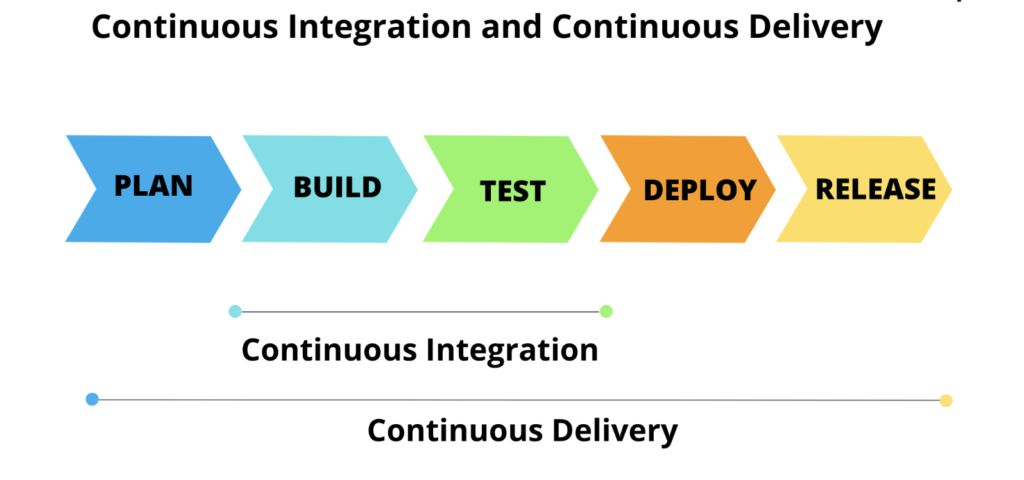In today’s fast-paced and competitive software development landscape, staying ahead of the curve is crucial for success. Companies like GoodPegg, which provide software development services in the USA, Canada, and worldwide, understand the importance of delivering high-quality software efficiently and rapidly. This is where Continuous Integration and Continuous Delivery (CI/CD) come into play. In this blog, we will explore how CI/CD practices are revolutionizing software development and how GoodPegg leverages them to deliver exceptional results to clients around the globe.
What is CI/CD?
Continuous Integration and Continuous Delivery, often abbreviated as CI/CD, is a set of practices, principles, and tools that aim to automate and streamline the software development and delivery process. These practices are designed to help development teams release software faster, with fewer errors, and with greater confidence in its quality.
Key Components of CI/CD:

- Continuous Integration (CI): This is the practice of automatically integrating code changes from multiple developers into a shared repository on a regular basis. Each integration triggers an automated build and a suite of tests to ensure that the new code does not break existing functionality.
- Continuous Delivery (CD): CD takes CI a step further by automating the deployment process. It ensures that every code change that passes CI tests is ready for production deployment. CD can include automated testing, deployment to staging environments, and even production releases.
The Benefits of CI/CD for GoodPegg and Its Clients:
- Speed and Efficiency: CI/CD significantly reduces the time it takes to deliver software. With automated testing and deployment pipelines, developers can push changes to production or staging environments quickly, resulting in faster time-to-market for clients.
- Quality Assurance: Automated testing and continuous monitoring of code quality help catch and fix issues early in the development process. This leads to more reliable software with fewer defects and enhances the overall client experience.
- Collaboration: CI/CD promotes collaboration among development, testing, and operations teams. Everyone works on the same codebase and benefits from the automated feedback loop, improving communication and reducing silos.
- Risk Reduction: By automating repetitive tasks and testing procedures, CI/CD reduces the risk of human error. This is crucial for GoodPegg, as it ensures that clients receive stable and secure software.
- Flexibility and Innovation: CI/CD enables GoodPegg to respond quickly to changing client requirements. Developers can make incremental changes and deploy them rapidly, allowing for continuous innovation.
Implementing CI/CD at GoodPegg:
GoodPegg’s commitment to delivering top-tier software solutions is reflected in its CI/CD implementation. Here’s a glimpse into their CI/CD workflow:
- Version Control: GoodPegg uses a robust version control system, such as Git, to track code changes and manage collaboration among developers.
- Automated Testing: They have a suite of automated tests, including unit tests, integration tests, and end-to-end tests, which are executed automatically upon each code integration.
- Continuous Integration: Code changes are continuously integrated into a shared repository, triggering automated builds and tests.
- Continuous Delivery: Once code changes pass all tests, they are automatically deployed to staging environments for further testing and client review.
- Monitoring and Feedback: GoodPegg employs monitoring tools to track application performance and user experience in real-time. Any issues are addressed promptly.
- Deployment to Production: After thorough testing, code changes are deployed to production environments with minimal manual intervention.
Conclusion:

Continuous Integration and Continuous Delivery (CI/CD) are integral to modern software development. They help companies like GoodPegg streamline their development processes, deliver high-quality software rapidly, and respond to client needs with agility. As software development continues to evolve, embracing CI/CD practices will be essential for companies aiming to stay competitive and deliver exceptional value to clients in the USA, Canada, and across the globe.
In a world where time-to-market, quality, and innovation are paramount, CI/CD is the compass that guides the ship toward success. GoodPegg is charting a course for its clients through these waters, ensuring that their software products are not only top-notch but also delivered efficiently and reliably.




